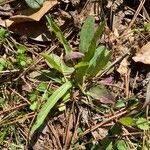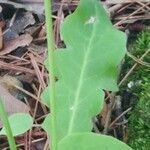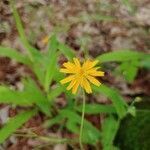Colonial perennial with slender, tuberiferous rhizomes, generally glabrous except under the heads; scape 1–5 dm, usually solitary; lvs all basal (sometimes a single pair present just above the base), linear to oblanceolate, entire or pinnately few-lobed, 3–20 cm × 2–25 mm; head solitary, 3–4.5 cm wide in fl; invol 9–14 mm, much surpassed by the golden-yellow fls; bracts 9–18, reflexed in age; pappus of 25–40 unequal capillary bristles and ca 10 inconspicuous scales 0.6–1 mm; polyploids based on x=5. Low prairies, fields, and other moist, chiefly open places, often in sandy soil; N.J. to Fla., w. to Kans. and Tex. Apr.–June. (Cynthia d.)



